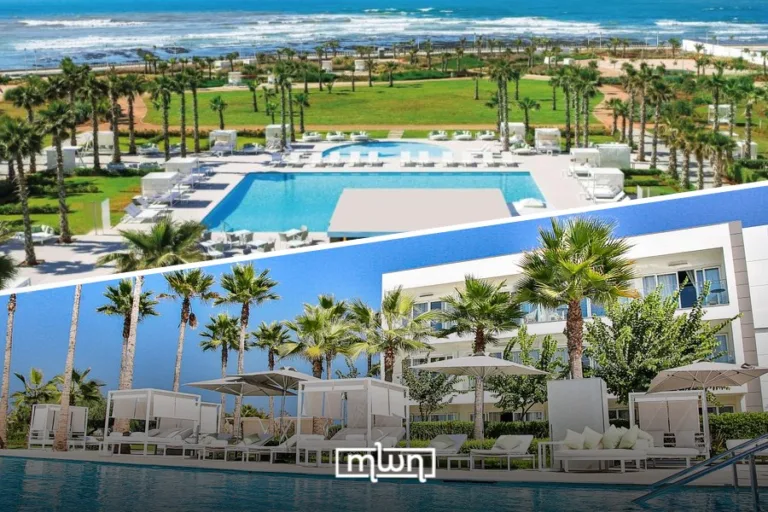Dr Gigi Kay, director of the American Fondouk, estimates that only about 40 mules and 100 donkeys are still working in the Fez Medina. Whereas, once hundreds clip-clopped along the streets and alleys, carrying goods from leather to handicrafts to food to furniture.
“The mules are part of the patrimony of Fez and they are disappearing fast,” says Dr Kay. “And those that are left, we need to value them more. We need to put them in the front of our campaigns to keep Fez alive. They are part of Fez, and have always been part of Fez. The association of mule owners goes back to the time of Leo the African in the 15th century. So I think it would be a great shame to lose them.”
The Mules of the Medina project, (called Dar el Brell in Arabic), comprises 30 new stables, and a paddock filled with sand, located near Oued Zhoune at the bottom of the Fez Medina. It’s near where tourist buses stop. It’s hoped there will eventually also be a cafe there.
When I arrived at the new stables a mule was happily rolling in the sand paddock, which looks onto a stunning view of Mt Zalagh.
Dr Kay explains how the idea for the new stables came about: “When I first came here in 2011, I realised that a lot of our animals were coughing. I was quite surprised about this, as it’s not really something you’d expect. So I decided to look at their stabling. I was taken to places in the Medina where they’re stabled, and realised straightaway that it was very dangerous, depressing and dark. The animals were always hobbled or tied up and there was no ventilation. Horses and mules, need ventilation.
“So I struggled with this situation for a year or two, before coming up with this idea of making a project with beautiful stabling, where we can keep an eye on the animals. Where maybe the tourists could come and have a ride on the mules.”

The cost of the project was around US$300, 000, with the retaining wall alone costing over $100, 000. Dr Kay explains: “The money is a co-operation between the national scouting organisations of Morocco and the American Fondouk. The President of the American Fondouk is the grandson of the person who set it up in 1927. He’s had a long history with the American Fondouk. He used to come here to Fez as a child. He gave a large sum of money to the Scouting Organisation of Morocco to come up with ideas that would improve the environment, or would improve animal welfare. And with the Scouts of Fez, we came up with this idea.
“Now that it’s finished, the scouts are becoming involved with the running of it; with the cleanliness and maybe helping to feed the animals. And they will use it as an agreeable place for the scouts to meet once a week.”
Architect Meriem Ghandi, responsible for the design of the project, says that the architecture is influenced by the vernacular style of the region. “But it’s combined with standards of today, where the animals can be kept in clean conditions and can stay in good health. Now that the project is finished, I am very happy to see that the animals here are putting on weight. Because it’s the proof that the animals are being well provided for and the aims of the project are being realised.”

However, there are further plans for the project. It is hoped that an old building on the site will become a cafe to welcome international visitors and locals. The Mules of the Medina is seeking a partner with vision, hospitality experience and capital to make this a reality. There is a staircase down from the road where many tourist buses park, so it would be an excellent spot for a cafe/restaurant.
“It’s an enchanting location,” says Dr Kay. “It’s open to public. In the evening, it’s covered in thousands and thousands of birds, all nesting in these big eucalyptus trees. It’s right under the wall of the Medina, but when you look out, you just see the countryside. You could be miles away in the country, yet we are only 5 minutes away from the Medina.”
The 22 donkeys and mules – the first residents of the new stables – are very fortunate. “They will have been tied up all their lives,” says Dr Kay. “So this is the first time they will have been let loose, ever. All the mule owners come and they let their animals loose in the paddock, and they roll. Horses and mules love to roll. Then they go straight back into their stable – they know which is their stable.”
The pandemic has been a particularly difficult time for the muleteers who own and work with the animals. Pre-pandemic, their average income was 50 dirhams per day. With many shops and businesses closed in the past 20 months, this has declined steeply. Caroussa (hand-carts) have also taken over much of the work traditionally done by the mules.
As a result, some muleteers are unable to continue to feed their mules. One of them is Abdelhak, below, who last week surrendered his mule to the Fondouk. He said he was sad to do so, as the mule had worked with him for many years.
It is hoped that the new stables, and the public interest they will attract, will make a difference to the lives of the muleteers and their animals.
First published at the View From Fez.














